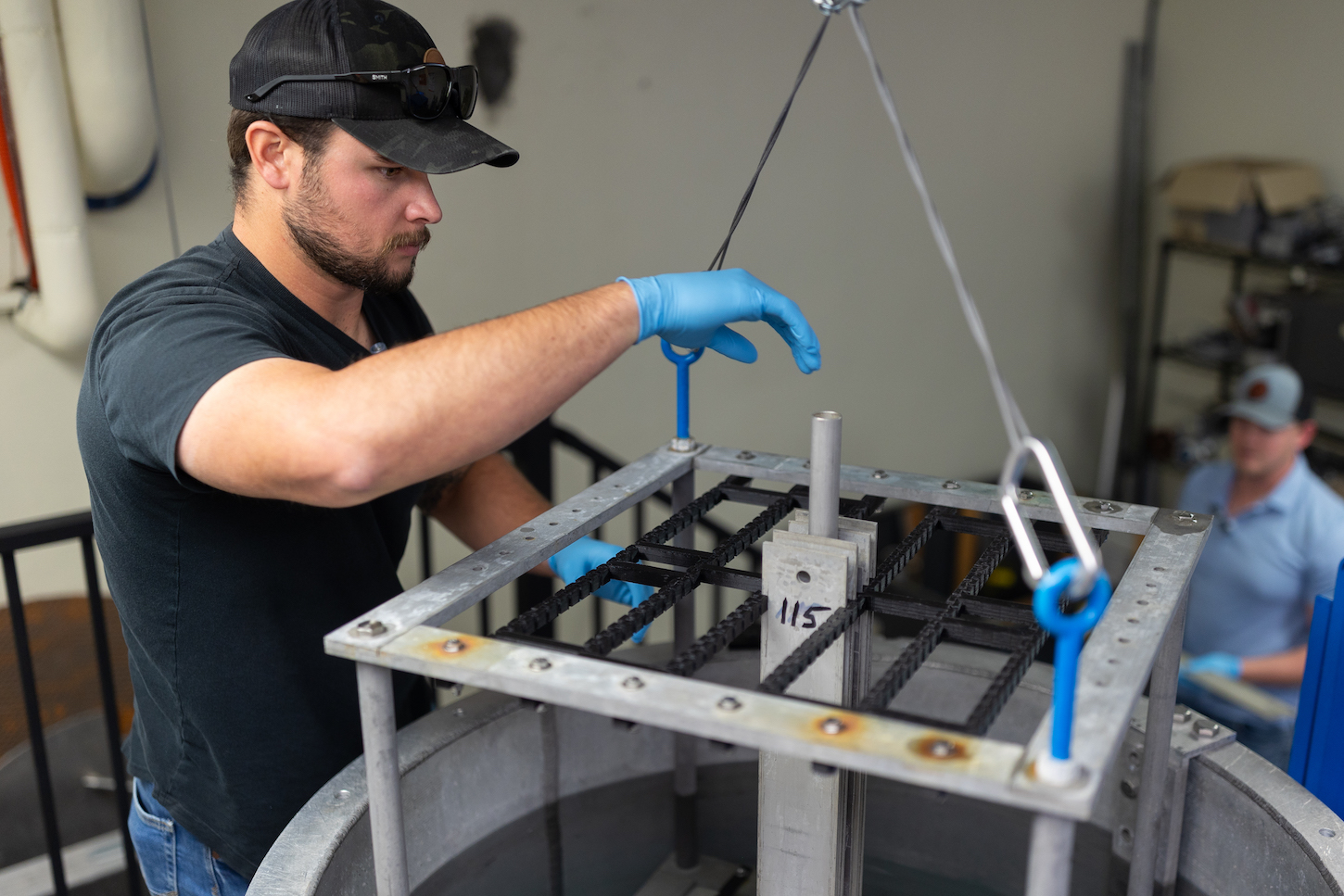Approaching Critical: ISU Workshop Trains Industry Pros on Safe Nuclear Fuel Handling
January 6, 2025

A hands-on workshop at Idaho State University is helping train professionals to safely handle the fuels that will power the next generation of nuclear reactors.
Called the ISU Hands-On Nuclear Criticality Safety Workshop, this day-long class is held in the Nuclear Engineering Lab on Idaho State’s Pocatello campus. It covers what’s happening inside a nuclear reactor as it approaches going critical.
“Criticality simply means that you have a self-sustained fission chain reaction. When a uranium-235 atom absorbs a neutron, the atom can fission–split–releasing energy, radiation, and additional neutrons,” explains Chad Pope, professor of nuclear engineering at Idaho State and lead instructor of the workshop. “The additional neutrons can then cause additional uranium-235 atoms to fission–called a chain reaction. The key is you must have just the right amount–a critical mass–of uranium-235 for the chain reaction to proceed indefinitely. If you have less than the critical mass, the chain reaction will stop. If you have more than the critical mass, the chain reaction will grow.”
Criticality and its self-sustaining chain reaction enable nuclear reactors to generate their power.
“Inside a nuclear reactor, criticality simply means that the reactor is ‘on,’” said Pope. “This is fine because a reactor has shielding, control rods, and monitoring instruments.”
It’s when a nuclear fuel like uranium-235 is outside of the reactor during fuel handling, processing, and storage that the danger of someone inadvertently creating criticality lies, if appropriate procedural and engineering controls are not in place.
“When handling uranium-235 outside of a reactor, it is vitally important to avoid the accumulation of a critical mass of uranium-235,” warns Pope. “Without the shielding and control rods of a reactor, the radiation released from a critical arrangement of uranium-235 can be lethal. This has happened several times, and people have indeed died. The purpose of the workshop is to help workers understand the hazards associated with criticality and how to avoid it.”
The first of ISU’s criticality safety workshops was held in January 2020 for 15 employees with the U.S. Department of Energy. The DOE requested the workshop to help their employees–especially new hires–gain experience and better understand the hazards involved around criticality. The workshop is divided into two parts: a series of lectures from Pope that cover the three main components of criticality safety–the physics, a history of criticality and related accidents, and the regulations governing criticality–plus a hands-on approach-to-critical experiment using the subcritical assembly. It leverages ISU’s unique facilities and Pope’s over 30 years of experience in the field.
“There are only six universities in the country that have both a nuclear reactor and a subcritical assembly, including ISU,” said Pope. “ISU is the only university in the country that uses 20 percent enriched uranium in a subcritical assembly. This is especially important since the nuclear industry is moving toward using 20 percent enriched uranium to fuel advanced reactors versus the current 5 percent enriched uranium.”
The focal point of the workshop is the experiment. Using the subcritical assembly–a purpose-built device that creates the same processes that happen inside a nuclear reactor–students add more and more uranium-235 fuel plates to the assembly and observe the increase in neutrons being released by fission. By design, however, the students can never reach criticality since the maximum amount of uranium-235 placed inside is well short of what it would take to achieve criticality.
“We only have 60 percent of the uranium 235 needed, which provides a very large safety margin,” said Pope. “This allows participants to handle the material, perform the experiment, and observe the effects of adding additional uranium-235 while avoiding any risk of an actual nuclear criticality accident.”
Over the years, industry professionals from the DOE, TerraPower, and more have participated in the workshop. In the last year alone, more than 100 employees at Idaho National Laboratory’s Materials and Fuel Complex have taken the course. The MFC is the “prime testing center for advanced technologies associated with nuclear energy power systems,” and the “complex is the nexus of research on new reactor fuels and related materials” at INL.
“The Idaho State University hands-on criticality safety workshop is beneficial for our team because it reinforces essential elements of our nuclear criticality safety program,” said Patrick Farnan, reactor division director at the MFC. “The workshop has bolstered our understanding of criticality safety regulations, and the hands-on experience with Idaho State University's subcritical assembly aligns with our preferred learning method, providing invaluable practical exposure.”
“The workshop increased my knowledge of reactor physics and criticality theory,” Cameron Dalley, a research facility operation professional at the MFC, said. “It provided real-world examples to utilize and learn from, especially if MFC operators and staff do not have a nuclear engineering background. I look forward to utilizing the principles in my day-to-day job.”
Revenue generated by the workshop is used to pay the graduate and undergraduate students who assist in hosting the class. Additional funds are then pumped back into the Department of Nuclear Engineering, helping to purchase new equipment for the Nuclear Engineering Laboratory. Most recently, the department purchased a large format 3D printer for the lab using funds from the workshop. The printer is currently being used to print a new lattice to hold the uranium-235 plates for the subcritical assembly. Pope says they plan to use the printer to create a full-size model of AGN-201, ISU’s on-campus nuclear reactor.
“The model will be translucent and connected to the reactor’s data acquisition system so that when we make changes to AGN-201–such as the position of the control rods–they’ll also move in the model and help students better visualize what is happening in the real reactor,” said Pope.
For more information on ISU’s Department of Nuclear Engineering, visit isu.edu/ne.
Categories:
